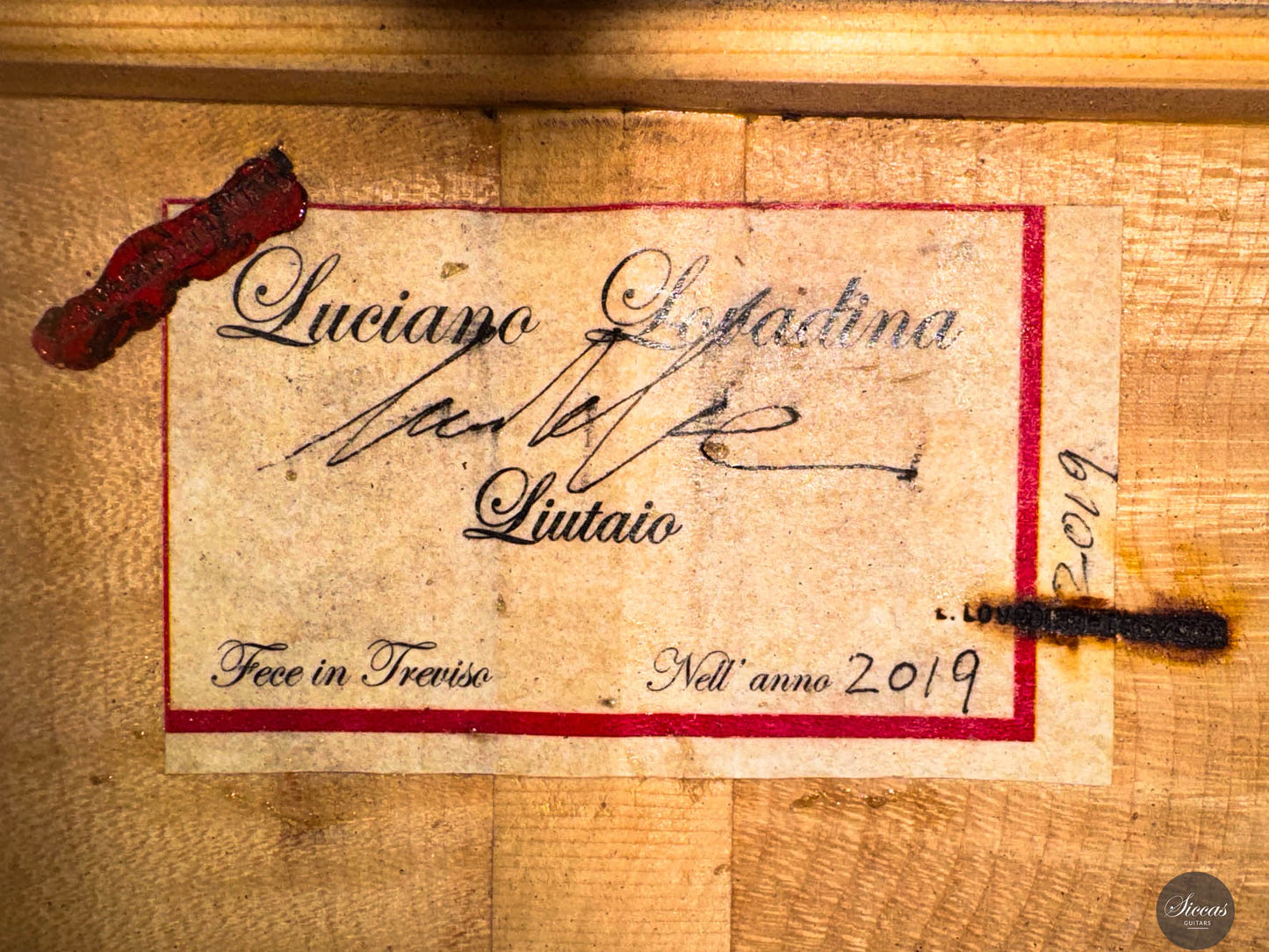Luciano Lovadina - 2019
Luciano Lovadina - 2019
Details
Details
Overview
Overview
Shipping important note
Shipping important note
Delivery times are typically reliable and most instruments arrive within the estimated timeframe.
Should any unexpected delay occur, our team will keep you informed and provide support at every step. For all shipping details and exceptions, please see our Shipping Policy.
Details about GPSR
Details about GPSR

























Video overview


More details about the guitar
About the luthier
Luciano Lovadina is an Italian luthier whose career in guitar‑making began in 1980, after initial training under violin‑maker Mario Novelli and subsequent work with Franco Simeoni, one of Italy’s most respected makers of bowed instruments. :contentReference[oaicite:2]{index=2} He further deepened his craft through a study course in France under Stephen Murphy. Lovadina’s instruments are the result of decades of work, where the selection of raw materials, the form of the instrument and the tonal outcome are all treated with equal seriousness. :contentReference[oaicite:3]{index=3}
About the guitar
Built in 2019, this traditionally‑constructed concert guitar by Lovadina features a spruce top and back and sides of flamed maple. The finish is a classic French polish that subtly accentuates the wood’s natural figure. With a scale of 650 mm and a nut width of 52 mm, the instrument offers a comfortable and authoritative feel under the fingers. The body weight of approximately 1,730 grams signals a build that favours substance and depth.
Tonally, the guitar delivers a long sustain and a sound rich in overtones and subtle colour. The bass register has presence and fullness, while the upper voices remain clear and articulate with a slightly nasal edge—qualities often found in romantic‑style instruments. The air‑body resonance around A/A♯ gives the entire voice a poised but bold character. Playability is smooth and engaging, making this guitar suitable for both refined recital work and expressive solo performance.
Condition
The instrument is in excellent condition with no cracks or repairs, showing only minimal, normal playing wear. It remains structurally sound and visually well‑preserved.
Regular care extends the life of the instrument
Even with careful use, a classical guitar may gradually change in appearance or respond to unstable storage conditions. Have a close look at your guitar regularly and be attentif to changes. If your instrument is suffering from its environement, it will let you know.
Protect Your Guitar: Handle with Care
Be mindful when touching your instrument with greasy or unwashed hands: any skin contact is a small attack on the varnish. Of course, a guitar is made to be played, but taking a few precautions helps preserve its beauty: wash your hands before playing, wear long sleeves, and avoid unnecessary direct skin contact with the body of the instrument.
Pro tip: Avoid playing with a button-up shirt, heavy jewelry, or a belt, as these can scratch the guitar. Also, make sure your guitar case is free of any objects that could damage the instrument during storage.
String care
A good habit to adopt is wiping down your strings briefly after each playing session. This small action significantly extends their lifespan and helps maintain a consistent, comfortable feel under your fingers.
Most importantly, clean strings are essential for keeping your instrument in tune. Corrosion, sweat, and dust can affect the uniformity of the strings and interfere with accurate tuning across the entire fingerboard.
Pro tip: If you're having trouble getting your guitar in tune, it might be time to change the strings. A useful test is to compare the pitch of the 12th fret harmonic with the fretted note at the 12th fret; if there's an unusually large gap between them, your strings may have lost their integrity and should be replaced.
Keep Your Shellac Finish Shining!
Got a guitar with a shellac (French polish) finish? Here's a simple trick: Take a clean microfiber cloth and gently breathe on the surface to create a light mist. Then, softly rub to remove fingerprints, sweat, and grease. That’s usually all it takes to keep it looking great, no products needed!
Pro tip: Every few years, treat your guitar to a check-up with a luthier to keep it in top shape.
Storing Your Guitar: Climate Matters
Your guitar can safely stay outside its case, as long as the surrounding environment maintains 42–55% humidity and a temperature between 18–25°C.
Keep in mind that humidity levels can still fluctuate inside the case, especially during seasonal changes.
- Too much humidity may cause overtightened strings and a dull tone.
- Too little humidity can lead to a bulging top, string buzz, or even cracks.
Avoid placing your guitar near radiators, air conditioners, or windows with direct sunlight.
Pro tip: Always close your guitar case while playing. This helps preserve a stable microclimate inside the case, so your instrument is protected the moment you put it back in.





















































